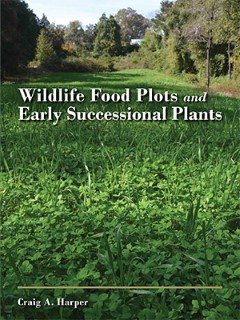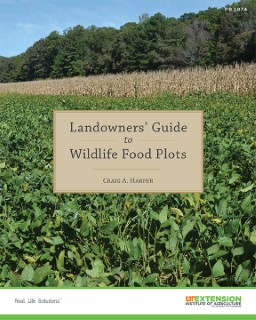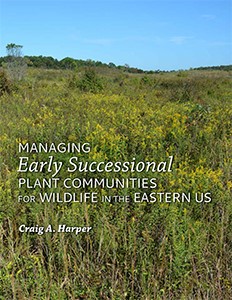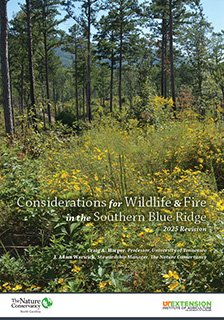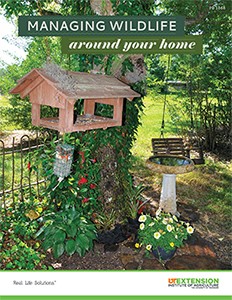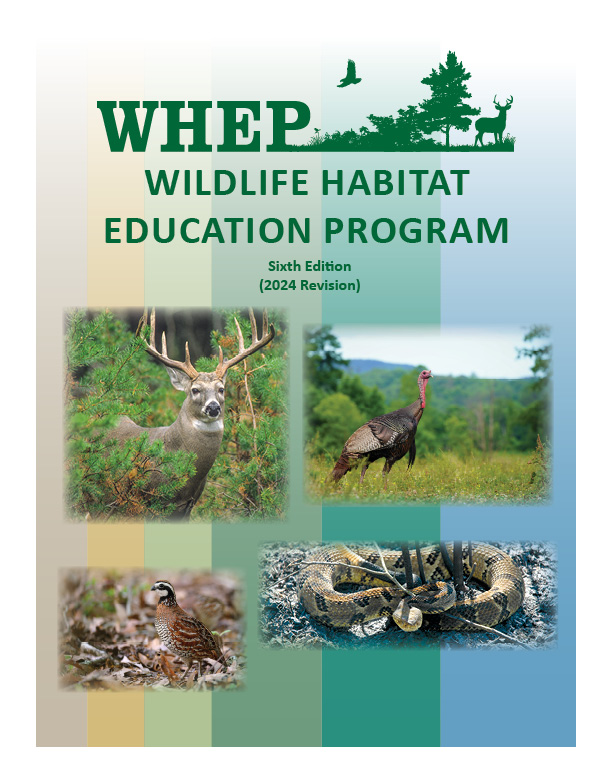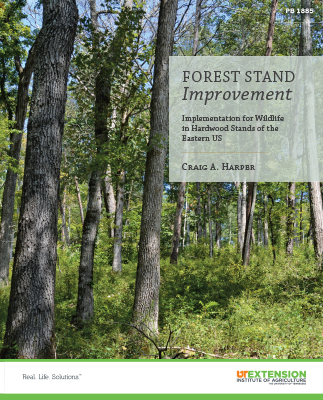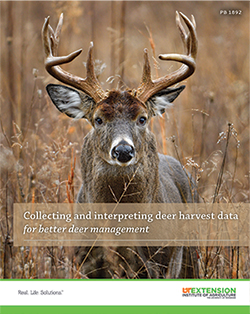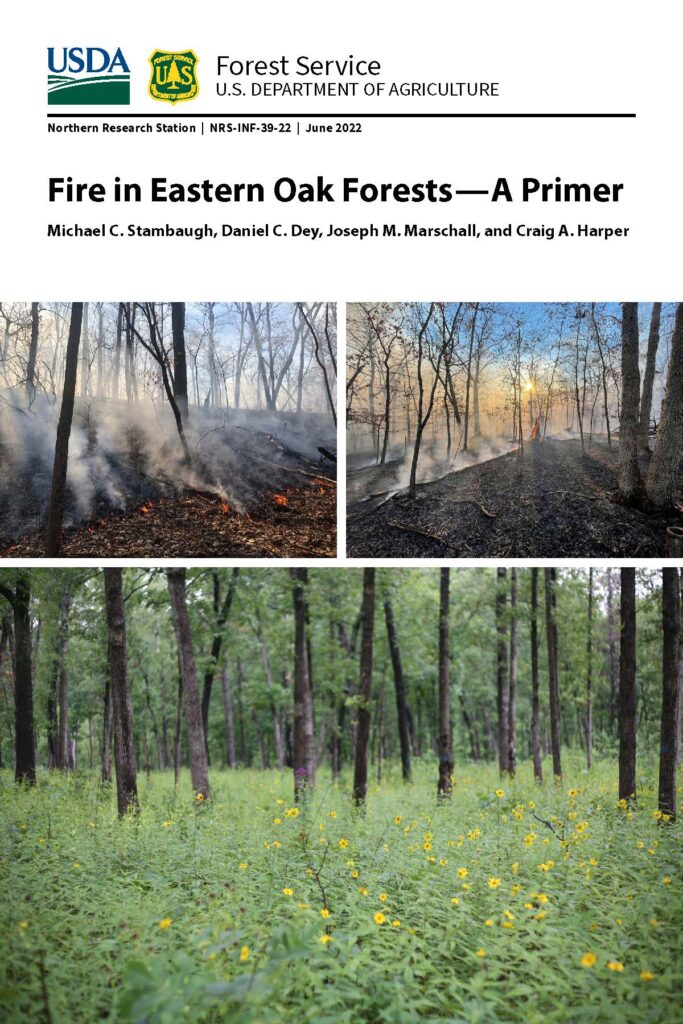Professor and Extension Wildlife Specialist
Wildlife management is important to landowners. In fact, surveys suggest non-industrial private landowners often want to learn more about wildlife management than several other natural resource-related issues, including hardwood management, forest insects and diseases, and harvesting and marketing timber. As the Extension Wildlife Specialist at the University of Tennessee, it is my responsibility to address a wide variety of topics and issues. However, given the preponderance of interest related to habitat for various wildlife species, and a documented need by state and federal agencies for increased knowledge and training related to applied habitat management, I concentrate my efforts in this area. I work collaboratively with state and federal agencies and non-government organizations on issues related to applied habitat management and conduct research to facilitate accurate extension information dissemination.
Provided on this site are publications, articles, and other materials my graduate students and I have produced to implement the overall Extension wildlife program in Tennessee. Although applied habitat management is a major focus, information provided here represents several areas, including habitat management, population management, wildlife damage management, and youth education.
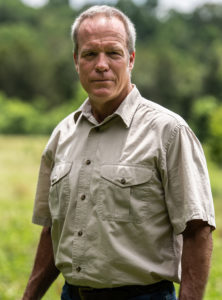
Publications available for purchase
*Please note: Wildlife Food Plots and Early Successional Plants is a complete book (476 pages) that includes 15 chapters and a full Plant ID Guide. Landowners’ Guide to Wildlife Food Plots is an abbreviated version that contains information on food plots only (60 pages).
Areas of Interest
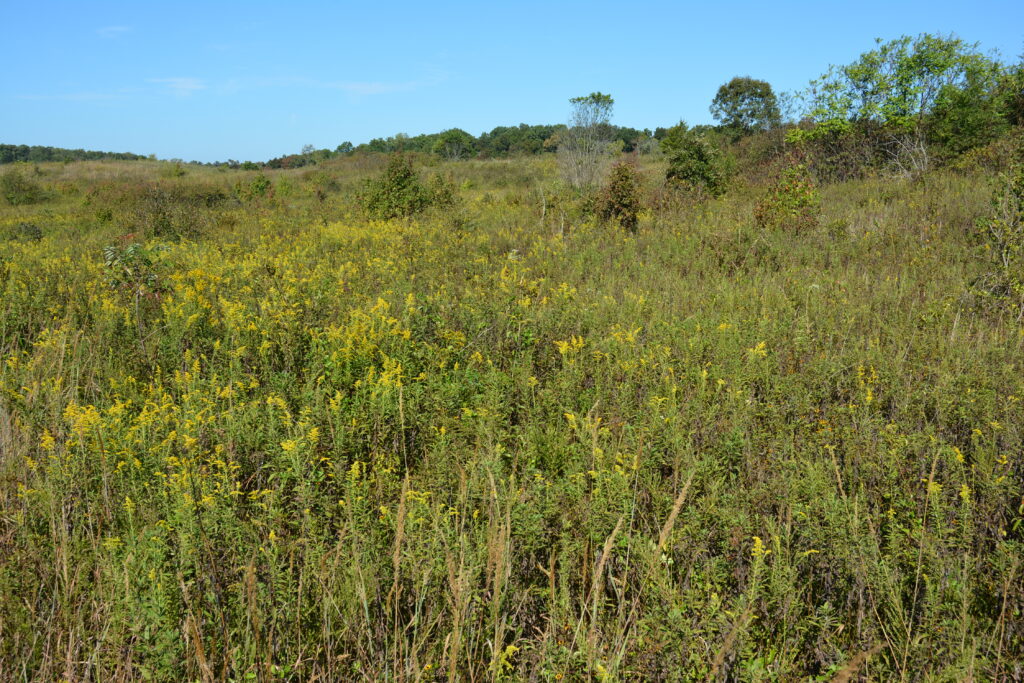
Below are selected materials my graduate students and I have produced as related to managing early successional plant communities for various wildlife species.
Scientific Articles
- Powell, B.L., J.W. GeFellers, D.A. Buehler, C.E. Moorman, J.M. Zobel, and C.A. Harper. 2025. Changes in plant composition following disturbance in early successional plant communities. Rangeland Ecology and Management 98:480-489.
- Turner, M.A., B.L. Powell, J. W. GeFellers, J. T. Bones, S. G. Marshall, and C.A. Harper. 2023. Sericea lespedeza control with postemergence and preemergence herbicide applications in fields managed for northern bobwhite. Wildlife Society Bulletin e1442.
- Powell, B.L., D.A. Buehler, C.E. Moorman, J.M. Zobel, and C.A. Harper. 2022. Vegetation structure and food availability following disturbance in early successional plant communities. Wildlife Society Bulletin https://doi.org/10.1002/wsb.1372.
- Harper, C.A., J.W. GeFellers, D.A. Buehler, C.E. Moorman, and J.M. Zobel. 2021. Plant community response and implications for wildlife following control of a nonnative perennial grass. Wildlife Society Bulletin 45(4):618-629.
- GeFellers, J.W., D.A. Buehler, C.E. Moorman, J.M. Zobel,and C.A. Harper. 2020. Seeding is not always necessary to restore native early successional plant communities. Restoration Ecology 28(6):1485-1494.
- Turner, M.A., J.W. GeFellers, L.M. Phillips, B.L. Powell, and C.A. Harper. 2021. Influence of soil amendment on forage quality and vegetation structure in old-field communities. Journal of the Southeastern Association of Fish and Wildlife Agencies.
- Moorman, C.E., R.L. Klimstra, C.A. Harper, J.F. Marcus, and C.E. Sorenson. 2017. Breeding songbird use of native warm-season and nonnative cool-season grass forage fields. Wildlife Society Bulletin 41(1):42-48.
- Brooke, J.M. and C.A Harper. 2016. Herbicides are effective for reducing dense native warm-season grass and controlling a common invasive species, sericea lespedeza. Journal of the Southeastern Association of Fish and Wildlife Agencies 3:178-184.
- Harper, C. A., Birckhead, J.L., P.D. Keyser, J.C. Waller, M. Backus, G.E. Bates, and E.D. Holcomb. 2015. Avian habitat following grazing native warm-season forages in the Mid-South United States. Rangeland Ecology and Management 68(2):166-172.
- Klimstra, R.L., C.E. Moorman, S.J. Converse, J.A. Royle, and C.A. Harper. 2015. Small mammal use of native warm-season and non-native cool-season grass forage fields. Wildlife Society Bulletin 39(1):49-55.
- McIntosh, D.W., G.E. Bates, P.D. Keyser, F.L. Allen, C.A. Harper, J.C. Waller, J.L. Birckhead, and W.M. Backus. 2015. The impact of timing biomass yield from native warm-season grass mixtures. Agronomy Journal 107(6):2321-2326.
- Birckhead, J.L., C.A. Harper, P.D. Keyser, G.E. Bates, D. McIntosh, J.C. Waller, and E.D. Holcomb. 2014. Structure of avian habitat following hay and biofuels production in native warm-season grass stands in the Mid-South. Journal of the Southeastern Association of Fish and Wildlife Agencies 1:115-121.
- Gruchy, J.P. and C.A. Harper. 2014. Effects of management practices on northern bobwhite habitat. Journal of the Southeastern Association of Fish and Wildlife Agencies 133-141.
- Holcomb, E.D., P.D. Keyser, and C.A. Harper. 2014. Responses of planted native warm-season grasses and associated vegetation to seasonality of fire in the Southeastern US. Southeastern Naturalist 13(2):221-236. Harper, C.A. and J.P. Gruchy. 2009. Conservation practices to promote quality early successional wildlife habitat. In, Burger Jr., L.W., and K.O. Evans (eds.), Managing working lands for northern bobwhite: the USDA NRCS Bobwhite Restoration Project. Washington, DC.
- Gruchy, J.P., C.A. Harper, and M.J. Gray. 2009. Methods for controlling woody invasion into CRP fields in Tennessee. Proceedings Gamebird 2006: Quail VI and Perdix XII 6:315-321.
- Harper, C.A., C.E. Moorman, and P.D. Keyser. 2008. Native grass and early successional wildlife habitat: Past lessons and a new vision. Proceedings Eastern Native Grass Symposium 6:120-126.
- Harper, C.A. 2007. Strategies for managing early succession habitat for wildlife. Weed Technology 21:932-937.
- Harper, C.A., G.D. Morgan, and C.E. Dixon. 2003. Establishing native warm-season grasses using conventional and no-till technology with various applications of Plateau herbicide. Proceedings Eastern Native Grass Symposium 3:63-70.
- Fettinger, J.L., C.A. Harper, and C.E. Dixon. 2002. Invertebrate availability for upland game birds in tall fescue and native warm-season grass fields. Journal of the Tennessee Academy of Science 77:83- 87.
Manuals
- Harper, C.A. 2017. Managing Early Successional Plant Communities for Wildlife in the Eastern US. Knoxville, TN. 91 pages. ISBN 978-0-692-90231-8.
- Harper, C.A., G.E. Bates, M.P. Hansbrough, M.J. Gudlin, J.P. Gruchy, and P.D. Keyser. 2007. Native warm-season grasses: Identification, establishment, and management for wildlife and forage production in the Mid-South. UT Extension, PB 1752. Knoxville, TN. 189 pages. ISBN 978-0- 9795165-0-4. (Purchase a hard copy here.)
Extension Publications
- Brooke, J.M., and Harper, C.A. 2018. Renovating native warm-season grass stands for wildlife. Purdue Extension. FNR-548-W. 27 pages. (Purchase a hard copy here.)
- Harper, C.A. 2017. A Quick Guide for Landowners Managing Old-fields for Wildlife. UT Extension. PB 1855. 13 pages. (Purchase a hard copy here.)
Popular Press and Extension Articles
- Harper, C.A., J.W. GeFellers, and C.E. Moorman. 2020. Establishing early successional vegetation the natural way. North Carolina Upland Gazette, Spring Issue.
- Harper, C.A. 2008. Native warm-season grasses and early successional habitat: Past lessons and a new vision. Tennessee Out-Of-Doors. Winter edition.
- Harper, C.A. 2007. Converting tall fescue and bermudagrass into quality early successional habitat. Wildlife Trends 7:7-14.
- Harper, C.A. and J.P. Gruchy. 2007. Old-field management for white-tailed deer. Quality Whitetails 14(3):16-24.
- Harper, C.A. 2005. Burning old-fields and woods to enhance wildlife habitat. Renewable Natural Resources Timely Tips – Landowners. Vol. 15, No. 1.
- Harper, C.A., C.E. Moorman, and M.J. Gudlin. 2004. Making old-fields productive for wildlife. Forest Landowner 63(4):44-47.
Posters Presented at Various Meetings
Theses
- Wade GeFeller’s thesis: An evaluation of early seral plant communities following tall fescue eradication and crop field abandonment
- Jessie Birckhead’s thesis: Avian Habitat Response to Grazing, Haying, and Biofuels Production in Native Warm-Season Forages in the Mid-South
- John Gruchy’s thesis: An Evaluation of Field Management Practices to Improve Bobwhite Habitat

Below are selected materials my graduate students and I have produced as related to managing forests and woodlands for various wildlife species. Our work has concentrated on game species, specifically wild turkeys, white-tailed deer, and ruffed grouse. However, the compositional and structural changes that occur for these species also benefit other species. Additional work related to ruffed grouse can be found under the Ruffed Grouse Ecology and Management tab.
Scientific Articles
- Turner, M.A. and C.A. Harper. 2024. Vegetation composition and structure for deer and turkey in pine stands following low-intensity management. Southeastern Naturalist 23(2):175-193.
- Turner, M.A., J.T. Bones, S.G. Marshall, and C.A. Harper. 2024. Canopy reduction and fire seasonality effects on deer and turkey habitat in upland hardwoods. Forest Ecology and Management 553:121657.
- Harris, K.A., J.D. Clark, R.D. Elmore, and C.A. Harper. 2020. Spatial ecology and resource selection of eastern box turtles. Journal of Wildlife Management 84(8):1590-1600.
- Turner, M.A., W.D. Gulsby, and C.A. Harper. 2020. Mixture of triclopyr and imazapyr more effective than triclopyr alone for hardwood forest stand improvement. Forest Science 67(1):43-48
- Brooke, J.M., P.S. Basinger, J.L. Birckhead, M.A. Lashley, J.M. McCord, J.S. Nanney, and C.A. Harper. 2019. Effects of fertilization and crown release on white oak (Quercus alba) masting and acorn quality. Forest Ecology and Management 433:305-312.
- Vander Yacht, A.L., S.A. Barrioz, P.D. Keyser, C.A. Harper, D.S. Buckley, D.A. Buehler, and R.D. Applegate. 2017. Vegetation response to canopy disturbance and season of burn during oak woodland and savanna restoration in Tennessee. Forest Ecology and Management 390:187-202.
- Vander Yacht, A.L., P.D. Keyser, C.A. Harper, D.S. Buckley, and A.M. Saxton. 2017. Restoration of oak woodlands and savannas in Tennessee using canopy disturbance, fire-season, and herbicides. Forest Ecology and Management 406:351-360.
- Vander Yacht, A.L., P.D. Keyser, D.A. Buehler, C.A. Harper, D.S. Buckley, and R.D. Applegate. 2016. Avian occupancy response to oak woodland and savanna restoration. Journal of Wildlife Management 80(6):1091-1105.
- Brooke, J.M., P.S. Basinger, J.S. Nanney, and C.A. Harper. 2015. Effectiveness of three postemergence herbicides in controlling an invasive annual grass, Microstegium vimineum. Journal of the Southeastern Association of Fish and Wildlife Agencies 2:262-267.
- Kilburg, E., C.E. Moorman, C. DePerno, D. Cobb, and C.A. Harper. 2015. Wild turkey prenesting resource selection in a landscape managed with frequent prescribed burns. Southeastern Naturalist 14(1):137-146.
- Stambaugh, M, J.M. Varner, R.F. Noss, D.C. Dey, N.L. Christensen, R.F. Baldwin, R.P. Guyette, B.B. Hanberry, C.A. Harper, S.G. Lindblom, and T.A. Waldrop. 2015. Clarifying the role of fire in the deciduous forests of eastern North America: reply to Matlack. Conservation Biology 29(3):942-946.
- McCord, J.M., C.A. Harper, and C.H. Greenberg. 2014. Brood cover and food resources for wild turkeys following silvicultural treatments in mature upland hardwoods. Wildlife Society Bulletin 38(2):265-272.
- Barrioz, S.A., P.D. Keyser, D.S. Buckley, D.A. Buehler, and C.A. Harper. 2013. Vegetation and avian response to oak savanna restoration in the Mid-South USA. American Midland Naturalist 169: 194-213.
- Lashley, M.A., J.M. McCord, C.H. Greenberg, and C.A. Harper. 2009. Masting characteristics of white oaks: Implications for management. Proceedings Annual Conference of Southeastern Association of Fish and Wildlife Agencies 63:21-26.
- Jones, B.C., J.F. Kleitch, C.A. Harper, and D.A. Buehler. 2008. Ruffed grouse brood habitat use in a mixed hardwood forest: Implications for forest management in the Appalachians. Forest Ecology and Management 255:3580-3588.
- Jones, B.C. and C.A. Harper. 2007. Ruffed grouse (Bonasa umbellus) use of stands harvested via alternative regeneration methods in the southern Appalachians. 15th Central Hardwoods Forest Conference. Knoxville, TN.
Book Chapters
- Elliott, K.J., C.A. Harper, and B.S. Collins. 2011. Herbaceous response to type and severity of disturbance. Pages 97-119 in C.H. Greenberg B.S. Collins, F.R. Thompson, eds., Sustaining young forest communities. Springer Books.
- Greenberg, C.H., R.W. Perry, C.A. Harper, D.J. Levey, and J.M. McCord. 2011. The role of young hardwood forest as high-quality food patches. Pages 121-141 in C.H. Greenberg B.S. Collins, F.R. Thompson, eds., Sustaining young forest communities. Springer Books.
- Spetich, M.A., R.W. Perry, C.A. Harper, and S.L. Clark. 2011. Fire in eastern hardwood forests through 14,000 years. Pages 41-58 in Sustaining young forest communities. C.H. Greenberg B.S. Collins, F.R. Thompson, eds., Springer Books.
- Warburton, G., C.A. Harper, and K. Weeks. 2011. Conservation of early succession in the Appalachian mountains: A manager’s perspective. Pages 225-251 in Sustaining young forest communities. C.H. Greenberg B.S. Collins, F.R. Thompson, eds., Springer Books.
Extension Publications
- Harper, C.A. 2020. Forest stand improvement: Implementation for wildlife in hardwood stands of the eastern US. UT Extension, PB 1885.
- Harper, C.A. 2015. Managing pine stands for wildlife. In A Tennessee landowner and practitioner guide for establishment and management of shortleaf and other pines, D.C. Clabo and W. Clatterbuck, editors. UT Extension, PB 1751.
Popular Press Articles
- Thomas, Lindsay, Jr. 2025. Do Deer Use Hinge-Cut Bedding Blocks? New Study Results Out. National Deer Association.
- Harper, C.A. and J.M. Brooke. 2019. Acorns and deer management: A necessary component or a periodic bonus? Quality Whitetails 26(6):26-28.
- Harper, C.A. 2009. Fertilizing oaks for more and sweeter acorns: Fact or fantasy? Wildlife Trends 9(3):22- 27.
- Harper, C.A. and C.E. Shaw. 2008. The effects of prescribed burning and fertilization on browse production in hardwood stands. Quality Whitetails 15(3):48-50.
Theses and Dissertations
- Michael McCord’s thesis: Effects of different silvicultural practices on wild turkey brood habitat and regeneration in upland hardwoods
- Ben Jones’ dissertation: Ruffed Grouse Habitat Use, Reproductive Ecology, and Survival in Western North Carolina
- Ryan Basinger’s thesis: Initial effects of silvicultural treatments on food availability and vegetation structure for wild turkeys

My graduate students and I have evaluated the effects of fire on plant communities and wildlife in early successional communities, forests, woodlands, and savannas. Below are materials providing information on prescribed fire in various settings.
Scientific Articles
- Turner, M.A., J.T. Bones, S.G. Marshall, and C.A. Harper. 2025. Effect of growing-season fire timing on oak regeneration. Fire Ecology. DOI:10.1186.
- Turner, M.A., J.T. Bones, S.G. Marshall, and C.A. Harper. 2024. Canopy reduction and fire seasonality effects on deer and turkey habitat in upland hardwoods. Forest Ecology and Management 553:121657.
- Research Brief 51. 2025. Oak Woodlands and Forests Fire Consortium.
- Harris, K.A., J.D. Clark, R.D. Elmore,and C.A. Harper. 2020. Direct and indirect effects of fire on eastern box turtles. Journal of Wildlife Management 84(7):1384-1395.
- Turner, M.A., W.D. Gulsby, C.A. Harper, and S. Ditchkoff. 2020. Improving coastal plain hardwoods for deer and turkeys with canopy reduction and fire. Wildlife Society Bulletin 44(4):705-712.
- Vander Yacht, A.L., S.A. Barrioz, P.D. Keyser, C.A. Harper, D.S. Buckley, D.A. Buehler, and R.D. Applegate. 2017. Vegetation response to canopy disturbance and season of burn during oak woodland and savanna restoration in Tennessee. Forest Ecology and Management 390:187-202.
- Harper, C.A, W.M Ford, M.A. Lashley, C.E Moorman, and M.C. Stambaugh. 2016. Fire Effects on Wildlife in the Central Hardwoods and Appalachian Regions, USA. Fire Ecology 12(2):127-159.
- Lashley, M.A., M.C. Chitwood, C.A. Harper, C.E. Moorman, and C.S. DePerno. 2015. Variability in fire prescriptions to promote wildlife foods in the longleaf pine ecosystem. Fire Ecology 11(3):62-79.
- Lashley, M.A., M.C. Chitwood, R. Kays, C.A. Harper, C.S. DePerno, and C.E. Moorman. 2015. Prescribed fire affects female white-tailed deer habitat use during summer lactation. Forest Ecology and Management 348:220-225.
- Stambaugh, M, J.M. Varner, R.F. Noss, D.C. Dey, N.L. Christensen, R.F. Baldwin, R.P. Guyette, B.B. Hanberry, C.A. Harper, S.G. Lindblom, and T.A. Waldrop. 2015. Clarifying the role of fire in the deciduous forests of eastern North America: reply to Matlack. Conservation Biology 29(3):942-946.
- Kilburg, E., C.E. Moorman, C. DePerno, D. Cobb, and C.A. Harper. 2015. Wild turkey prenesting resource selection in a landscape managed with frequent prescribed burns. Southeastern Naturalist 14(1):137-146.
- Kilburg, E., C.E. Moorman, C. DePerno, D. Cobb, and C.A. Harper. 2014. Wild turkey nest survival and nest-site selection in the presence of growing-season prescribed fire. Journal of Wildlife Management 78(6):1033-1039.
Popular Press Articles
- Harper, C.A. 2020. Fresh tips on using fire. Quality Whitetails 27(1):34-37.
- Harper, C.A. 2012. Bring fire back to our oak forests: Part II. Quality Whitetails 18(6):50-57.
- Harper, C.A. 2011. Bring fire back to our oak forests: Part I. Quality Whitetails 18(5):74-80.
- Harper, C.A. and C.E. Shaw. 2008. The effects of prescribed burning and fertilization on browse production in hardwood stands. Quality Whitetails 15(3):48-50.
Extension Publications
- Harper, C.A. and Warwick, J.A. 2025. Considerations for Wildlife and Fire in the Southern Blue Ridge. Knoxville, TN. 40 pages.
- Stambaugh, M.C., D.C. Dey, J.M. Marschall, and C.A. Harper. 2022. Fire in eastern oak forests—a primer. NRS-INF-39-22. Madison, WI. US Department of Agriculture, Forest Service, Northern Research Station. 15 pages.
Extension Articles
- Harper, C.A. 2005. Burning old-fields and woods to enhance wildlife habitat. Renewable Natural Resources Timely Tips – Landowners. Vol. 15, No. 1.
Additional Resources
- Introduction to Prescribed Fire in Southern Ecosystems
- TN Prescribed Fire Council
- Oak Woodlands and Forests Fire Consortium
- Consortium of Appalachian Fire Managers and Scientists
Theses and Dissertations
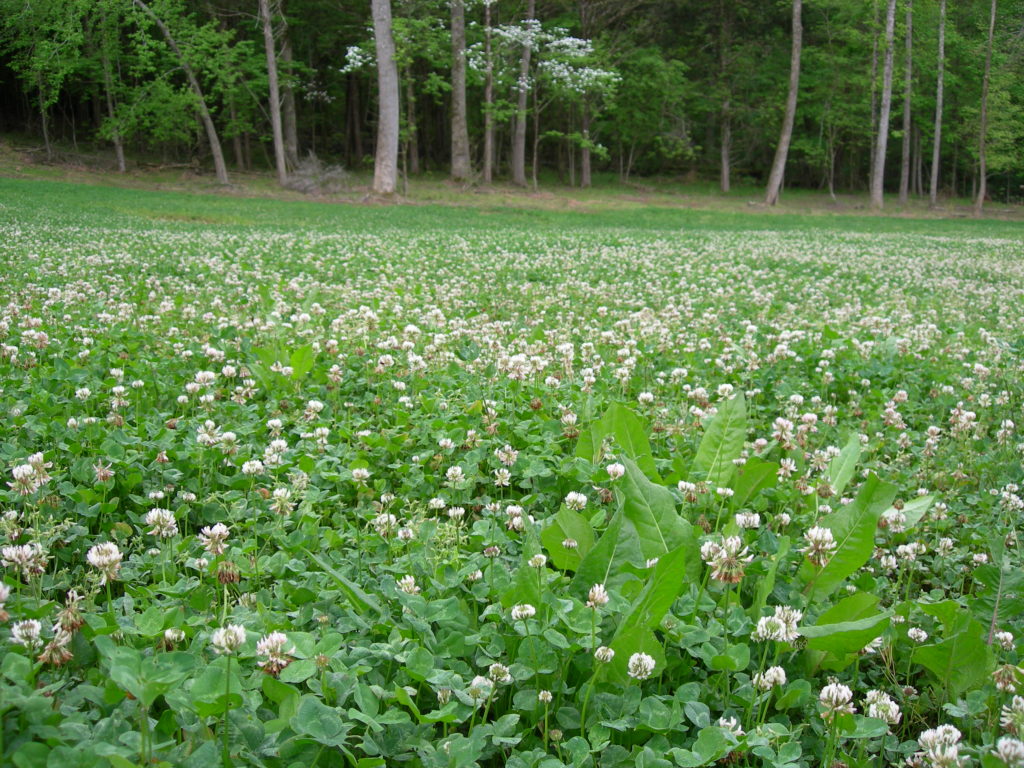
My graduate students and I have worked on many issues related to food plots over the years. This work was summarized in Wildlife Food Plots and Early Successional Plants listed below. Also provided below are other materials related to food plots and other plantings.
Scientific Articles
- Turner, M.A., B.L. Powell, L.M. Phillips, and C.A. Harper. 2024. Influence of management on white-tailed deer use of perennial forage plantings. Journal of the Southeastern Association of Fish and Wildlife Agencies.
Books
Harper, C.A. 2019. Wildlife Food Plots and Early Successional Plants. NOCSO Publishing, Maryville, TN. 476 pages.
Extension Publications
- Resop, L., B.K. Strickland, V. Reed, S.G. Shanmugam, and C.A. Harper. 2025. Comparing conventional and regenerative approaches to wildlife food plots. Mississippi State University Extension and UT Extension. MSU Extension Publication 4118.
- Pedreira, B., C.A. Harper, T. Raper, V. Sykes, and J. McNeal. 2024. Forage and field crop seeding guide for Tennessee. UT Extension, PB 378.
- Harper, C.A. 2019. Landowners’ Guide to Wildlife Food Plots. UT Extension, PB 1874. (Purchase a hard copy here.)
Popular Press Articles
- Turner, M.A., B.L. Powell, and C.A. Harper. 2021. Considerations for mowing and managing perennial forage plots. Quality Whitetails 28(3):34-38.
- Turner, M.A., B.L. Powell, and C.A. Harper. 2021. Do brassicas actually get sweeter after a frost? Quality Whitetails 28(2):40-41.
- Harper, C.A. 2018. Five principles of food plot management. Quality Whitetails 25(2):34-40.
- Harper, C.A. and R.G. Basinger. 2017. Calculating proper seeding rate for food plot success. Wildlife Trends 17(1):4-7.
- Harper, C.A. and R.G. Basinger. 2017. Successful seeding rates. Quality Whitetails 24(6):78-79.
- Harper, C.A. 2015. Deer prefer awnless wheat. Quality Whitetails 22(5):26-27.
- Harper, C.A. 2012. A primer on herbicide use for quality food plots. Quality Whitetails 19(2):52-59.
- Harper, C.A. 2008. Annual vs. perennials: Which is best for your deer nutrition program? Quality Whitetails 15(2):20-29.
Extension Articles
- Spray now to control weeds in cool-season forage food plots
- Soil test now for spring wildlife plantings
- Winter Food Plot Fertilization
- A paper concerning use of mineral sites by white-tailed deer: Shaw, C.E., C.A. Harper, M.W. Black, and A.E. Houston. 2007. An evaluation of four mineral formulations to attract deer to camera survey sites. Journal of the Tennessee Academy of Science 82:83-87.
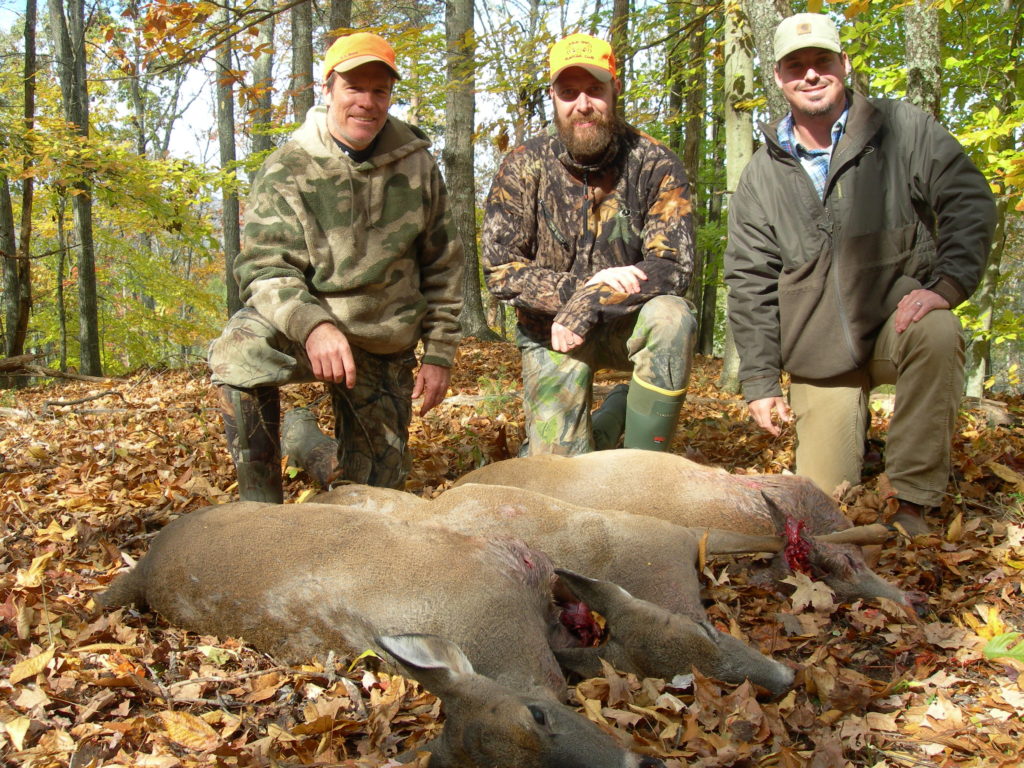
Provided below is information related to both habitat and population management for white-tailed deer.
Scientific Articles
- Harper, C.A., B.K. Strickland, M.A. Lashley, M.A. Turner, J.S. Nanney, M.C. Chitwood, C.E. Moorman, N. Ellison-Neary, J.M. Brooke, and G. Street. 2025. Soil quality does not predict plant nutrition available to white-tailed deer. Journal of Wildlife Management. DOI: 10.1002/jwmg.22722.
- Turner, M.A., C.A. Harper, M.A. Lashley, B.K. Strickland, and M.Q. Wilber. 2025. Plant nutrient concentrations inform deer diet limitations. Journal of Environmental Management 375:124186.
- Turner, M.A., C.A. Harper, B.K. Strickland, M.A. Lashley, and M.Q. Wilbur. 2024. Correlating male white-tailed deer antler size with female body mass across multiple spatial scales. Journal of Wildlife Management e22626.
- Turner, M.A., B.L. Powell, N. Poudyal, A.E. Houston, and C.A. Harper. 2022. Extension programming educates hunters on chronic wasting disease. Journal of Southeastern Association of Fish and Wildlife Agencies 9:151-158.
- Kroeger, T., C.E. Moorman, M.A. Lashley, C. Chitwood, C.A. Harper, and C.S. DePerno. 2020. White-tailed deer use of overstory hardwoods in longleaf pine woodlands. Forest Ecology and Management 464.
- Turner, M.A., W.D. Gulsby, C.A. Harper, and S. Ditchcoff. 2020. Improving coastal plain hardwoods for deer and turkeys with canopy reduction and fire. Wildlife Society Bulletin 44(4):705-712.
- Nanney, J.S., C.A. Harper, D.A. Buehler, and G.E. Bates. 2018. Nutritional carrying capacity for cervids following disturbance in hardwood forests. Journal of Wildlife Management 82(6):1219-1228.
- Beaver, J.T., C.A. Harper, L.I. Muller, P.S. Basinger, M.J. Goode, and F.T. van Manen. 2016. Current and spatially explicit capture-recapture analysis methods for infrared-triggered camera density estimation of white-tailed deer. Journal of the Southeastern Association of Fish and Wildlife Agencies 3:195-202.
- Lashley, M.A., M.C. Chitwood, C.A. Harper, C.E. Moorman, and C.S. DePerno. 2015. Poor soils and density-mediated body weight in deer: Forage quality or quantity? Wildlife Biology 21(4):213-219.
- Nanney, J.S., A.S. Willcox, A.E. Houston, and C.A. Harper. 2015. Influence of a quality deer management program on hunter knowledge, perceptions, and satisfaction. Journal of the Southeast Association of Fish and Wildlife Agencies 2:247-254.
- Lashley, M.A., M.C. Chitwood, R. Kays, C.A. Harper, C.S. DePerno, and C.E. Moorman. 2015. Prescribed fire affects female white-tailed deer habitat use during summer lactation. Forest Ecology and Management 348:220-225.
- Beaver, J.T., C.A. Harper, R.E. Kissell, Jr., L.I. Muller, P.S. Basinger, M.J. Goode, F.T. van Manen, W. Winton, and M.L. Kennedy. 2014. Aerial vertical-looking infrared imagery to evaluate bias of distance sampling techniques for white-tailed deer. Wildlife Society Bulletin 38(2):419-427.
- Goode, M.J., J.T. Beaver, L.I. Muller, J.D. Clark, F.T. van Manen, C.A. Harper, and P.S. Basinger. 2014. Capture-recapture of white-tailed deer using DNA from fecal pellet groups. Wildlife Biology 20(5):270-278.
- Lashley, M.A., M.C. Chitwood, C.A. Harper, C.E. Moorman, and C.S. DePerno. 2014. Collection, handling, and analysis of wildlife forages for concentrate selectors. Wildlife Biology in Practice 10(1):6-15.
- Harper, C.A., C.E. Shaw, J.M. Fly, and J.T. Beaver. 2012. Attitudes of Tennessee deer hunters toward quality deer management. Wildlife Society Bulletin 36(2):277-285.
- Lashley, M.A. and C.A. Harper. 2012. Effects of extreme drought on native forage nutritional quality and white-tailed deer diet selection in the Central Hardwoods. Southeastern Naturalist 11(4):699-710.
- Lashley, M.A., C.A. Harper, G.E. Bates, and P.D. Keyser. 2011. Forage availability for white-tailed deer following silvicultural treatments. Journal of Wildlife Management 75:1467-1476.
- Shaw, C.E. and C.A. Harper. 2008. Effects of various approaches to quality deer management on white-tailed deer harvest. Proceedings Annual Conference of Southeastern Association of Fish and Wildlife Agencies. 62:1-6.
- Shaw, C.E., C.A. Harper, M.W. Black, and A.E. Houston. 2007. An evaluation of four mineral formulations to attract deer to camera survey sites. Journal of the Tennessee Academy of Science 82:83-87.
Popular Press Articles
- Houston, A.E. and C.A. Harper. 2015. QDM journey: The Ames story. Quality Whitetails 22(5):44-51.
- Harper, C.A. and A.E. Houston. 2009. Managing quality deer at Ames Plantation. Quality Whitetails 16(1):50-56.
- Harper, C.A. 2008. Annual vs. perennials: Which is best for your deer nutrition program? Quality Whitetails 15(2):20-29.
- Harper, C.A. and C.E. Shaw. 2008. The effects of prescribed burning and fertilization on browse production in hardwood stands. Quality Whitetails 15(3):48-50.
- Harper, C.A. and J.P. Gruchy. 2007. Old-field management for white-tailed deer. Quality Whitetails 14(3):16-24.
Extension Articles
- Considering antlers and estimating live age of bucks
- What is a “cull” buck?
- Hemorrhagic disease in Tennessee common wildlife diseases in early fall
- Mississippi State University Extension publication: Using Antler Restrictions to Manage for Older-aged Bucks
Extension Publications
- Turner, M.A., Strickland, B.K., Adams, K.P., Harper, C.A. 2021. Collecting and interpreting deer harvest data for better deer management. UT Extension, PB 1892. (Purchase a hard copy here.)
Other Resources
- QDMA Whitetail Report 2020
- QDMA Whitetail Report 2019
- QDMA Whitetail Report 2018
- QDMA Whitetail Report 2017
- QDMA Whitetail Report 2016
- QDMA Whitetail Report 2015
- QDMA Whitetail Report 2014
- QDMA Whitetail Report 2013
- QDMA Whitetail Report 2012
- QDMA Whitetail Report 2011
- QDMA Whitetail Report 2010
- QDMA Whitetail Report 2009
Theses and Dissertations
- Mark Turner’s dissertation: Evaluating the Effects of Forage Availability and Landscape Composition on White-tailed Deer Morphometrics across the Eastern U.S.
- Jordan Nanney’s thesis: Forage availability and nutritional carrying capacity for cervids following prescribed fire and herbicide applications in young mixed-hardwood forest stands in the Cumberland Mountains, Tennessee
- Seth Basinger’s thesis: Rutting behavior and factors influencing vehicle collisions of white-tailed deer in Middle Tennessee
- Jarred Beaver’s thesis: An Evaluation of Population Estimators and Forage Availability and Quality for White-tailed Deer in Tennessee
- Marcus Lashley’s thesis: Deer Forage Available Following Silvicultural Treatments in Mature Hardwood Forest
- Chris Shaw’s thesis: An Evaluation of Quality Deer Management Programs in Tennessee
Podcasts
- Deer University: Mississippi State University Extension. Episode 039 – Deer Habitat Management with Craig Harper.
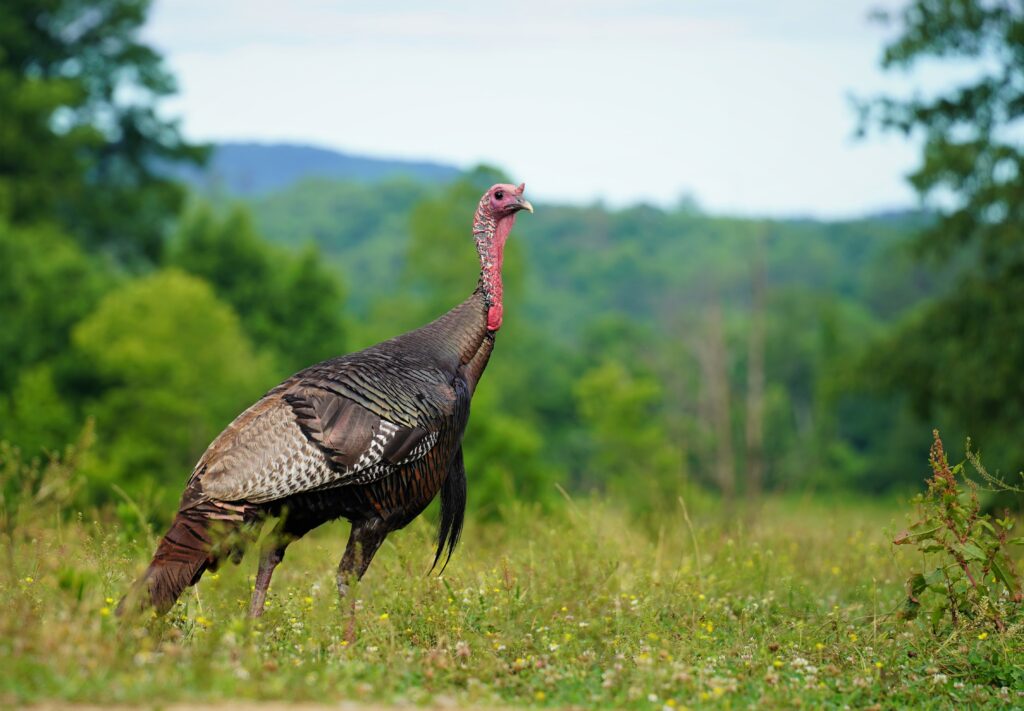
Dave Buehler and I led the Tennessee Cooperative Wild Turkey research project, 2017—2024, in five counties of south-middle Tennessee to investigate the declining harvest and population. Below are select publications and other resources that provide information on wild turkey ecology and management learned from that project and others.
Scientific Articles
- Phillips, L.M., V.M. Johnson, C.A. Harper, N. Poudyal, R.D. Shields, and D.A. Buehler. 2024. Effects of COVID-19 on turkey hunter satisfaction and behavior in Tennessee. Journal of the Southeastern Association of Fish and Wildlife Agencies.
- Quehl, J.O., L.M. Phillips, V.M. Johnson, C.A. Harper, J.D. Clark, R.D. Shields, and D.A. Buehler. 2024. Assessing wild turkey productivity before and after a 14-day delay in the start date of the spring hunting season. Ecology and Evolution. DOI: 10.1002/ece3.11390
- Quehl, J.O., L.M. Phillips, V.M. Johnson, C.A. Harper, N.C. Poudyal, R.D. Shields, and D.A. Buehler. 2024. Changes in hunter behavior, success, and satisfaction, in relation to wild turkey season opening dates. Journal of the Southeastern Association of Fish and Wildlife Agencies.
- Johnson, V.M., C.A. Harper, R.D. Applegate, R.W. Gerhold, and D.A. Buehler. 2022. Nest-site selection and survival of wild turkeys in Tennessee. Journal of Southeastern Association of Fish and Wildlife Agencies 9:134-143.
- Kilburg, E., C.E. Moorman, C.S. DePerno, D. Cobb, and C.A. Harper. 2015. Wild turkey prenesting resource selection in a landscape managed with frequent prescribed burns. Southeastern Naturalist 14(1):137-146.
- Kilburg, E., C.E. Moorman, C. DePerno, D. Cobb, and C.A. Harper. 2014. Wild turkey nest survival and nest-site selection in the presence of growing-season prescribed fire. Journal of Wildlife Management 78(6):1033-1039.
Extension Publications
- Buehler, D.A. and C.A. Harper. 2024. Tennessee Cooperative Wild Turkey Project: Summary of key results and recommendations. UT Extension Publication, W 1250.
Theses
- Vinnie Johnson’s thesis: Nesting and Brooding Ecology of Eastern Wild Turkey in South-Central Tennessee
- Joe Quehl’s thesis: Assessing the Effects of the Spring Hunting Season Start Date on Wild Turkey Seasonal Productivity and Hunter Behavior
Videos & Podcasts
- Effects of a 2-week delay in the wild turkey hunting season on wild turkey productivity. Wild Turkey Science podcast, Episode 77.
- Results of the Tennessee Cooperative Wild Turkey Study. The Turkey Hunter podcast, Episode 481.
- Managing nesting and brooding cover for wild turkeys. Wild Turkey Science podcast, Episode 30.
- Defining nesting cover and brooding cover for wild turkeys. Wild Turkey Science podcast, Episode 29.
- Effects of a delayed season-opening date on wild turkeys. Meat-Eater podcast, Episode 438.
- Effects of a delayed season-opening date on wild turkeys. Wild Turkey Science podcast, Episode 1.
- Dr. Craig Harper discusses wild turkey nesting cover in south-middle Tennessee. 2023. UTIA School of Natural Resources YouTube Channel.
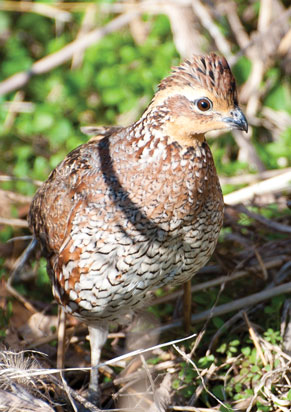
Below are selected materials my graduate students and I have produced as related to managing northern bobwhite. Search the Early Succession Management tab for additional information related to northern bobwhite habitat.
Scientific Articles
- Richardson, A.D., A.J. Kroeger, C.E. Moorman, C.A. Harper, B. Gardner, M.D. Jones, and B.M. Strope. 2020. Nesting ecology of northern bobwhite on a working farm. Wildlife Society Bulletin.
- Kroeger, T., C.S. DePerno, C.A. Harper, S. Rosche, and C.E. Moorman. 2020. Northern bobwhite nonbreeding selection in a longleaf pine woodland. Journal of Wildlife Management 84(7):1348-1360.
- Lituma, C.M., D.A. Buehler, E.P. Tanner, A.M. Unger, P.D. Keyser, and C.A. Harper. 2017. Factors affecting availability for detection: An example using radio-collared Northern Bobwhite (Colinus virginianus). PLoS ONE 12(12):e0190376.
- Brooke, J.M., E.P. Tanner, D.C. Peters, A.M. Unger, C.A. Harper, P.D. Keyser, J.D. Clark, and J.J. Morgan. 2017. Northern bobwhite breeding season ecology and resource selection on a managed reclaimed surface mine in Kentucky. Journal of Wildlife Management 81:73-85.
- Brooke, J.M., D.C. Peters, A.M. Unger, E.P. Tanner, C.A. Harper, P.D. Keyser, J.D. Clark, and J.J. Morgan. 2015. Habitat manipulation influences northern bobwhite resource selection on a reclaimed surface mine. Journal of Wildlife Management 79(8):1264-1276.
- Unger, A.M., E.P. Tanner, C.A. Harper, P.D. Keyser, F.T. van Manen, and J.J. Morgan. 2015. Northern bobwhite seasonal habitat selection on a reclaimed surface coal mine in Kentucky. Journal of the Southeastern Association of Fish and Wildlife Agencies 2:235-246.
- Peters, D.C., J.M Brooke, E.P. Tanner, A.M. Unger, P.D. Keyser, C.A. Harper, J.D. Clark, and J.J. Morgan. 2015. Impact of experimental habitat manipulation on northern bobwhite seasonal survival on a reclaimed surface coal mine. Journal of Wildlife Management 79(4):605-617.
- Tanner, E., A.M. Unger, P.D. Keyser, C.A. Harper, J. Clark, and J. Morgan. 2012. Survival of radio-marked versus leg-banded northern bobwhite in Kentucky. Proceedings Seventh National Quail Symposium 7:212-216.
- Unger, A.M., E. Tanner, C.A. Harper, P.D. Keyser, and J. Morgan. 2012. Northern bobwhite survival related to movement on a reclaimed surface coal mine. Proceedings Seventh National Quail Symposium 7:223-228.
Extension Articles
- Broiler litter not likely to affect northern bobwhite or wild turkeys, but…
- Do Wild Turkeys Influence Quail Or Grouse Populations?
- Once again, pen-raised quail are not the answer!!
Extension Publications
- Harper, C.A. and D.A. Buehler. 2025. Tennessee Cooperative Northern Bobwhite Project: Summary of Key Results and Management Recommendations. UT Extension, W 1355.
Theses
- Evan Tanner’s thesis: Northern bobwhite (Colinus virginianus) population ecology on reclaimed mine lands. 98 pages
- Jarred Brooke’s theses: Influence of Habitat Manipulations on Northern Bobwhite Resource Selection on a Reclaimed Surface Mine
- Ashley Unger’s thesis: Northern Bobwhite (Colinus virginianus) Habitat Selection on a Reclaimed Surface Mine in Western Kentucky
- David Peters’ thesis: Population Ecology of Northern Bobwhite (Colinus virginianus) on a Reclaimed Surface Mine
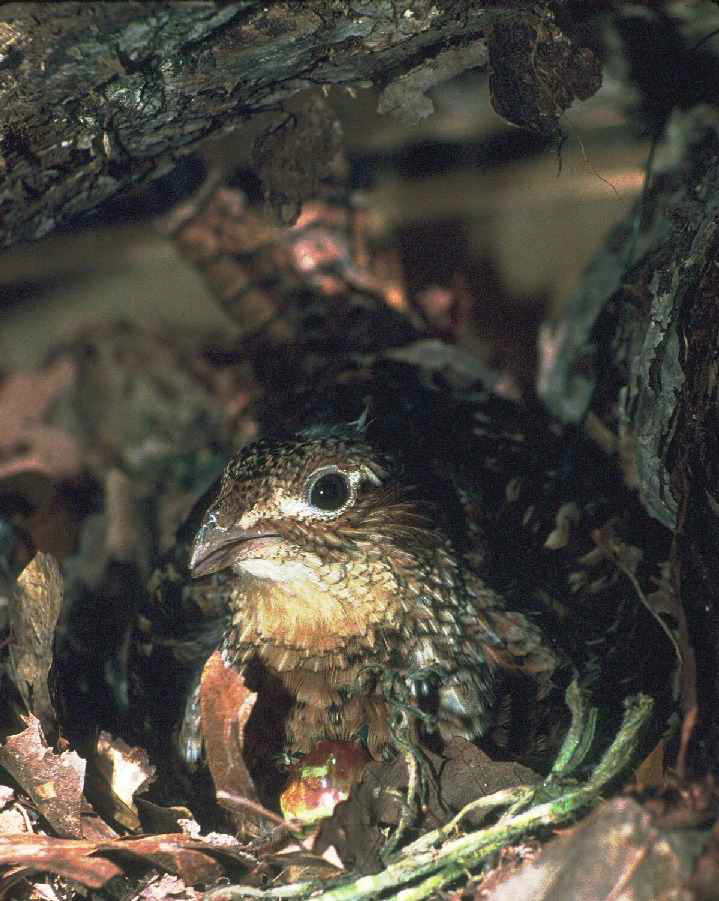
Below are selected materials my graduate students and I produced after working with ruffed grouse in the mountains of North Carolina. Our project was part of a regional cooperative, the Appalachian Cooperative Grouse Research Project, which involved several universities and state wildlife agencies throughout the central and southern Appalachians.
Scientific articles
- Jones, B.C., J.F. Kleitch, C.S. Dobey, D.A. Buehler, and C.A. Harper. 2015. Ruffed grouse reproductive ecology and nest site selection in western North Carolina. Journal of Southeastern Association of Fish and Wildlife Agencies 2:193-201.
- Tirpak, J.M., W.M. Giuliano, T.J. Bittner, J.W. Edwards, C.A. Harper, W.K. Igo, D.F. Stauffer, and G.W. Norman. 2010. Ruffed grouse habitat preference in the central and southern Appalachians. Forest Ecology and Management 260:1525-1538.
- Jones, B.C., C.L. Dobey, J.L. Kleitch, C.A. Harper, D.A. Buehler, W.G. Minser, G.S. Warburton. 2008. Ruffed grouse survival and population structure in western North Carolina. Proceedings Annual Conference of Southeastern Association of Fish and Wildlife Agencies.
- Jones, B.C., J.F. Kleitch, C.A. Harper, and D.A. Buehler. 2008. Ruffed grouse brood habitat use in a mixed hardwood forest: Implications for forest management in the Appalachians. Forest Ecology and Management 255:3580-3588.
- Devers, P.K., D.F. Stauffer, G.W. Norman, D.E. Steffen, D.W. Whitaker, J. Sole, T. Allen, S. Bittner, D.A. Buehler, J.W. Edwards, D. Figert, S. Friedhoff, W.M. Giuliano, C.A. Harper, W. Igo, R. Kirkpatrick, M. Seamster, H. Spiker, D. Swanson, and B. Tefft. 2007. Ruffed grouse population ecology in the Appalachian region. Wildlife Monographs. Number 168.
- Jones, B.C. and C.A. Harper. 2007. Ruffed grouse (Bonasa umbellus) use of stands harvested via alternative regeneration methods in the southern Appalachians. 15th Central Hardwoods Forest Conference. Knoxville, TN.
- Whitaker, D.M., D.F. Stauffer, G.W. Norman, P.T. Devers, J. Edwards, W.M. Giuliano, C.A. Harper, W. Igo, J. Sole, H. Spiker, and B. Tefft. 2007. Factors associated with variation in home-range size of Appalachian ruffed grouse. Auk 124:1407-1424.
- Tirpak, J.M., W.M. Giuliano, C.A. Miller, T.J. Allen, S. Bittner, D.A. Buehler, J.W. Edwards, C.A. Harper, W.K. Igo, G.W. Norman, M. Seamster, and D.F. Stauffer. 2006. Ruffed grouse population dynamics in the central and southern Appalachians. Biological Conservation 133:364-378.
- Whitaker, D.M., Stauffer D.F., G.W. Norman, P.T. Devers, T.J. Allen, S. Bittner, D.A. Buehler, J. Edwards, S. Friedhoff, W.M. Giuliano, C.A. Harper, and B. Tefft. 2006. Factors affecting habitat use by Appalachian ruffed grouse. Journal of Wildlife Management 70:460-471.
- Jones, B.C., C.A. Harper, D.A. Buehler, and G.S. Warburton. 2005. Use of spring drumming counts to index ruffed grouse populations in the southern Appalachians. Proceedings Annual Conference of Southeastern Association of Fish and Wildlife Agencies 59:135-143.
- Schumacher, C.L., C.A. Harper, D.A. Buehler, G.S. Warburton, and W.G. Minser, III. 2001. Drumming log habitat selection by male ruffed grouse in North Carolina. Proceedings Annual Conference of Southeastern Association of Fish and Wildlife Agencies 55:466-474.
Book Chapters
- Buehler, D.A., C.A. Harper, D.M. Whitaker, B.C. Jones, C.S. Dobey, J.L. Kleitch, J. O’Keefe, T.M. Fearer, E.G. Endrulat, J.M. Tirpak, and D.F. Stauffer. 2011. Habitat requirements. Pages 87-96 in D.F. Stauffer, editor. Ecology and management of Appalachian ruffed grouse. Hancock House. 176 pages.
- Harper, C.A., B.C. Jones, D.M. Whitaker, G.W. Norman, M.A. Banker, and B.C. Tefft. 2011. Habitat management. Pages 130-151 in D.F. Stauffer, editor. Ecology and management of Appalachian ruffed grouse. Hancock House. 176 pages.
- Smith, B., B.C. Jones, J.W. Edwards, C.A. Harper, P.K. Devers, C. Dobony, S. Haulton, J.M. Tirpak, J.L. Fettinger, W.M. Giuliano, and D.A. Buehler. 2011. Brood ecology. Pages 41- 53 in D.F. Stauffer, editor. Ecology and management of Appalachian ruffed grouse. Hancock House. 176 pages.
- Tirpak, J.M., P.K. Devers, W.M. Giuliano, J.W. Edwards, B.C. Jones, and C.A. Harper. 2011. Nesting ecology. Pages 31-40 in D.F. Stauffer, editor. Ecology and management of Appalachian ruffed grouse. Hancock House. 176 pages.
Theses and Dissertations
- Jennifer Fettinger’s thesis: Ruffed grouse nesting ecology and brood habitat in western North Carolina. 112 pages.
- Benjamin Jones’s dissertation: Ruffed grouse habitat use, reproductive ecology, and survival in western North Carolina. 189 pages.
- Carrie Schumacher’s thesis: Ruffed grouse habitat use in western North Carolina. 74 pages.
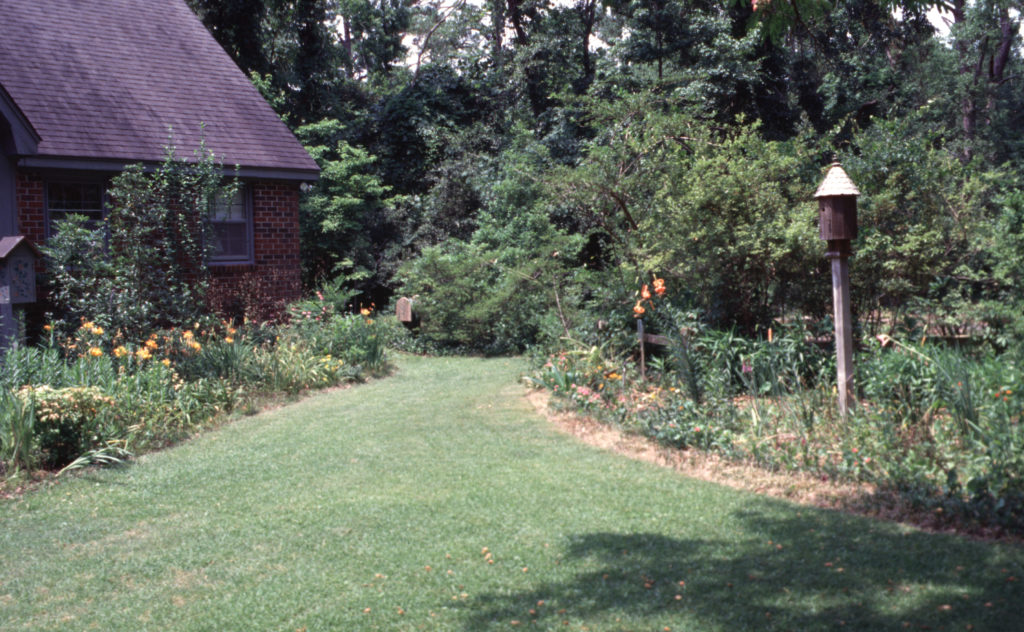
A few resources related to backyard wildlife management.
Extension Articles
- Leave young wildlife alone
- Harper, C.A., N.R. Bumgarner, C. Reese, and B.G. Dunlap. 2018. Managing wildlife around your home. UT Extension, PB 1868. 52 pages. (Purchase a hard copy here.)
- Beware of cats and backyard wildlife
- Snake! Is it venomous?
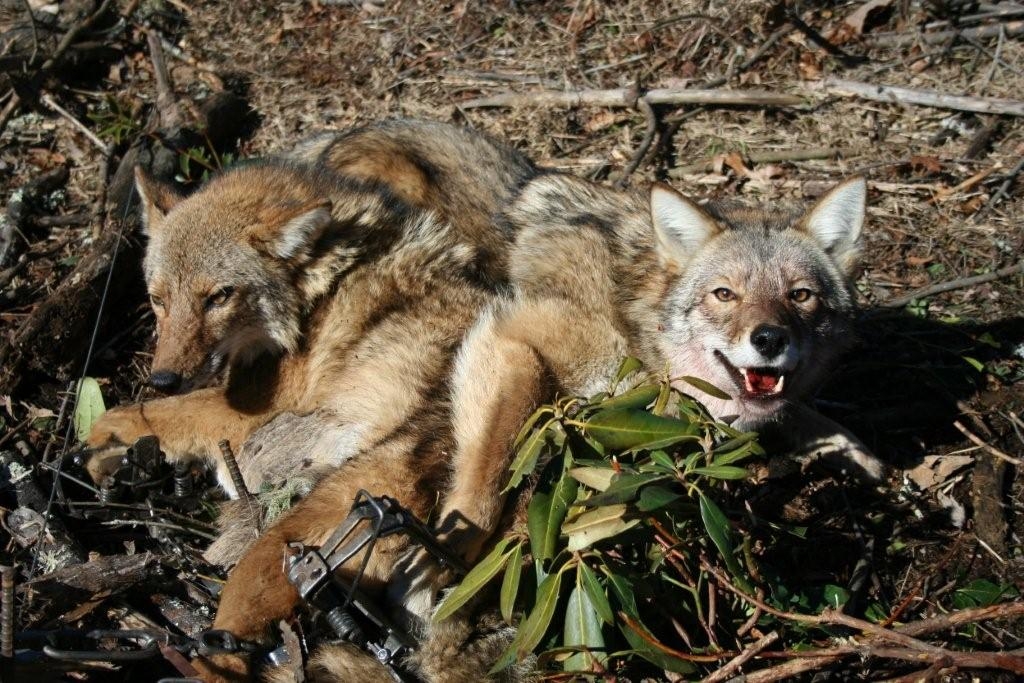
A few resources to help with wildlife damage management.
Internet Center for Wildlife Damage ManagementRid Your Home & Yard of Problem Wildlife, by HomeAdvisor
Extension Publications
- Graves, C. and C.A. Harper. 2023. Tips for reducing human-wildlife conflicts around the home in residential areas. UT Extension, SP 1035.
- Harper, C.A., N.R. Bumgarner, C. Reese, and B.G. Dunlap. 2018. Managing wildlife around your home. UT Extension, PB 1868. 52 pages. (Purchase a hard copy here.)
- Dixon, C.E. and C.A. Harper. 2002. Using single-strand fencing to manage deer damage. The University of Tennessee Agricultural Extension Service, SP 598.
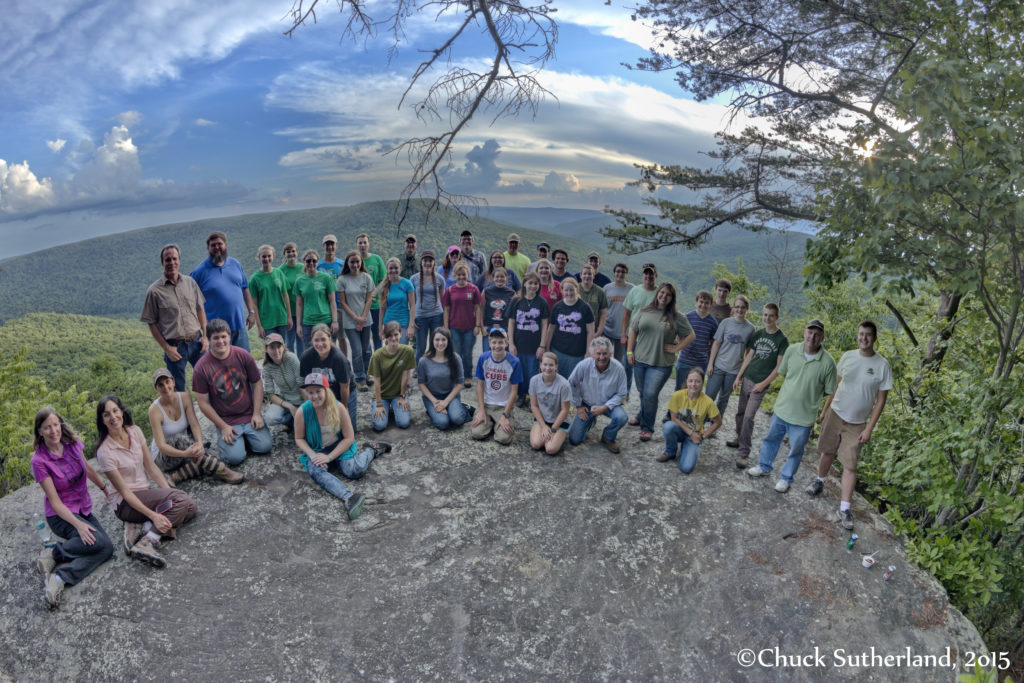
The Tennessee 4-H Wildlife Judging program teaches youth the basic principles of wildlife ecology and management. 4-H Wildlife Judging involves contests where youth evaluate habitat for a variety of wildlife species. The program attracted attention from other states and a regional contest for states throughout the South began in 1989. By 1991, additional states had become interested in the program and a national contest was initiated. The National Wildlife Habitat Education Program Invitational continues today as state-winning teams are invited to participate each summer. We now use the National WHEP manual in Tennessee and follow the guidelines set forth by the National WHEP Committee.
WHEP Manual, Sixth Edition, 2024
Download portions of the manual:
- Intro/Activities
- Ecoregions
- Wildlife Species
- Wildlife Management Practices
- Appendices
Download Blank Scoresheets:
- Ecoregion Forms with Species
- Blank Ecoregion Forms
- Blank Judge Scoresheets for Activities III-A and III-B
Changes made in the 2024 WHEP Manual revision
Relatively minor text revisions were made throughout the manual. Substantial changes and revisions are listed below.
Clarification was made to distinguish the objectives of Activity II and Activity III.
Three new wildlife species, American alligator, American bumble bee, and monarch butterfly were added to the species list for various ecoregions.
Black bear, American bumble bee, and monarch butterfly were added to the species list for Eastern Deciduous Forest. Largemouth bass was removed as a species for Eastern Deciduous Forest.
Monarch butterfly was added to the species list for Great Plains Grassland: Shortgrass Prairie, Great Plains Grassland: Tallgrass/Mixed Prairie, Intermountain—Foothills Zone, Intermountain—Montane Zone, Mediterranean, Northeast Mixed Forest, Pacific Coastal Forest, Prairie Brushland, Urban, and Woodland.
Black bear was added to the species list for Intermountain—Foothills and Northeast Mixed Forest ecoregions.
American alligator, American bumble bee, and monarch butterfly were added to the species list for Southeast Mixed and Outer Coastal Plain Forest, and bluegill was deleted from the species list.
Channel catfish was added to the species list for Wetlands.
Water Developments for Wildlife was added as a possible WMP for bobcat.
Tillage Management was retitled as Soil Conservation Agriculture, and the description of the practice was revised.
Other 4-H Wildlife publications
- Deck, A.L. and C.A. Harper. 2007. Tennessee 4-H Junior High Wildlife Conference and Shooting Sports Camp Manual. UT Extension, PB 1687. 52 pages.
- Rhea, J.P., C.A. Harper, and T.K. Hill. 2003. Fish and fishing in Tennessee. 4-H Member Guide, Grade 6. The University of Tennessee Agricultural Extension Service, PB 1700. 32 pages.
- Hill, T.K. and C.A. Harper. 2001. Terrestrial and aquatic ecology. 4-H Member Guide, Grade 11. The University of Tennessee Agricultural Extension Service, PB 1441. 56 pages.
